- Home
- Tom Clancy
Battle Ready Page 4
Battle Ready Read online
Page 4
In his eyes, this was not at all a bad thing. He got a chance to see all kinds of different people and places, and soak up a wealth of varied experiences.
In his first advisory assignment, he’d spent a couple of weeks in the tidal swamps of the Rung Sat—“the Forest of Death”—near the Mekong Delta. Now he had been ordered to Binh Dinh Province in the northern part of the II CTZ (Corps Tactical Zone), where he was to take up duties with the Vietnamese Marines 5th Battalion, replacing an adviser returning home on emergency leave.
The 5th Battalion had long been heavily involved in an operation the Americans were calling “Pershing.” Its aim was to use the U.S. 1st Cavalry and the VNMC (Vietnamese Marine Corps) to root out and destroy the communist infrastructure: to clear and pacify, to interdict infiltration routes, and to reeducate the people (“win hearts and minds”). Pershing took up the better part of 1967.
It took Zinni three days to travel from the Rung Sat to Binh Dinh. The last leg was by helicopter. He arrived at the battalion position at sunset.
The helo landed in a dry rice paddy next to a tree line, where he was met by Jim Laney, the 5th Battalion junior adviser, now filling in for his boss on emergency leave. Laney was a mustang, a onetime enlisted man who had received a meritorious commission as an officer.
He led Zinni through the tree line and into the battalion command post, a half-destroyed hut (it was roofless, and the wall facing the line of troops and paddy area had been completely blown away). As they walked past the Marine positions, Zinni noticed that they were digging in at the edge of the paddies just a few meters from the hut, obviously getting ready for serious action. The battalion had been conducting a parallel sweep on both sides of a vast east-west open rice paddy complex.
“We’ve been in continuous contact since we began the sweep,” Laney explained, “and they’ve attacked us every night. They consider this area to be theirs. They’ve owned it for a long time. We’re intruders.
“You’ll move across the paddy area tomorrow morning,” he continued, “to join the battalion executive officer who has two companies on the other side.”
“Why can’t I just cross the paddy now?” Zinni asked.
Laney laughed. “You won’t get ten yards before they pick you off. In the morning, the Marines will clear the area just to our west. Then you can cross.”
Zinni stepped into the roofless, three-sided hut and met the battalion commander, a tough but friendly and wise old Marine major named Nha, and a combat legend. He gave Zinni a warm welcome, insisting that he join him for chow.
Later, as they ate, a full moon left an eerie glow across the paddies. After dinner, as Zinni was settling into a corner of the hut for the night, Laney reminded him that they surely would be hit; he should be ready.
That got young Zinni’s attention. Excited to be getting into a close-quarters firefight for the first time, he carefully laid out his M-16 and harness, figuring out how he would roll out of his poncho liner, grab his rifle and gear, and come up ready to shoot.
Sure enough, around midnight, the whole area erupted with fire.
Zinni bolted out of a deep sleep and spun into action, surprising himself with how quickly he rolled, grabbed the gear, and was down in a shooting position ready for action. There was one problem. It was dark as a coalpit in hell. What happened to the full moon? He heard the others on the radio and the return fire, but he couldn’t see a thing, not even tracers.
He shouted to Laney: “Can you see anything? I can’t.”
“You’re facing the wrong way,” Laney yelled back over the firing.
Zinni then realized that his planned “roll” into action had been in the wrong direction and he was facing the back wall of the hut. Red-faced, he crawled around. Major Nha was laughing sympathetically; he felt for the new guy.
Anyhow, Zinni’s embarrassment passed quickly when it hit him that rounds were whizzing overhead and slamming into the back walls. He could clearly see the enemy muzzle flashes and the outgoing tracer fire of the Marines.
In time, he would develop into an experienced veteran who could remain focused in the madness of a firefight. The sounds and flashes from the weapons would tell him what types were firing, at what distances, and how many there were. But at this point, all he heard was a cacophony of noises, flashes, and blasts.
After about twenty minutes, the firing trailed off and eventually ceased. The others crawled back under their poncho liners, but Zinni was still too excited to sleep. This was his first experience with a close exchange of fire. He was standing at the front of the hut, gazing out across the moonlit paddies and thinking about the attack, when a single round cracked, zinged right between his legs, and slammed into the hardened mud base on the hut floor. “Oh, shit!” he realized. “I shouldn’t be standing up!”
He dove back into the hut and slipped under his poncho liner. The next morning at first light his Vietnamese cowboy,7 who had witnessed this adventure, handed him a cup of steaming coffee and the spent round he’d dug out of the floor. “Keep it as a reminder not to be stupid,” he said.
“Thanks,” Zinni replied, meaning it.
MEANWHILE, the scouts and lead units had already started forward, and Major Nha determined it was clear enough for Zinni, his cowboy, and his radio operator to cross over to join the other half of the battalion on the south side of the paddies.
After the linkup, the battalion executive officer provided Zinni with a running description in fluent English of the area and the operation.
“The Vietnamese Marines have operated in Binh Dinh Province on and off for the last three years,” the executive officer (XO) explained as they moved out. “Our area of operations is on the Bong Son Plain, which starts at the coast of the South China Sea and spreads west into the foothills and mountains of the Central Highlands. It’s a critical area, with major seacoast cities, airfields, and ports; it’s a major rice-producing area, with many lakes and waterways; the principal north-south highway of Vietnam, Highway 1, runs through it; and it’s also the major food-producing area of the central region.
“In 1965, the U.S. Army’s 1st Cavalry Division (Airmobile) moved into the area and remains the primary American unit operating here.
“This is a hard-core VC region; stay-behind cadres were left by Ho Chi Minh after the French Indochina War,” in violation of the peace treaty that divided Vietnam; “there are heavy concentrations of VC [Vietcong] sympathizers; and many homes and classrooms still have pictures of Ho Chi Minh. The dense forests and mountains in the western part of the province give sanctuary to the enemy and easy access from the Central Highlands near the Cambodian border to the populated areas on the coastal plain. You can expect almost continuous enemy sniping or hit-and-run attacks.”
Not long after Zinni moved out with the battalion XO and the two companies, they made contact with the VC again. They were at a crossing point between rice paddies and a line of trees when their point squads came under fire. The lead company quickly moved up on line and got into a heavy exchange of fire with dug-in VC. With only three to four hundred meters of paddies separating the VC from the Marines, the rounds were zinging all over.
In order to get a better sense of the fight, Zinni and the XO moved forward. The XO stood at the edge of the tree line and examined the enemy positions, then looked around for Zinni, signaling for him to join him. Zinni was soon standing beside him, anxious not to screw up.
“I’d like to put some artillery on the enemy positions,” the XO told Zinni, pointing at the area he had in mind, about five hundred meters away. At that moment, rounds hit a tree nearby and Zinni hit the deck. “Don’t worry,” the XO said, with a smile, “the VC fire is high. It’s okay to stand up.”
Zinni stood, then started his radio call for fire procedure. Though he had never before called in a fire mission, even in training, he knew basically how it was done, and he’d been tested on it. He carefully went through the remembered procedure. A few minutes later, artillery rounds smacked i
nto the VC positions a few hundred meters away. While trees exploded all around from flying shrapnel, he stood, observing and adjusting the fire . . . without noticing that the VC were also adjusting their fire, bringing it down. VC rounds were starting to hit all around him; but this did not faze Zinni, focused as he was on the artillery.
After a time, the VC fire slacked off and he could tell they were breaking contact.
But when he turned toward the XO to get his take on that, he noticed that everybody was on the ground covering their heads. “Get down!” the XO was yelling. “Now they’re shooting low!”
Moments later, the Marines began moving across the paddies and pursuing the enemy. As they went by, they smiled and gave him a thumbs-up.
Later, the XO told him how impressed they’d been that he’d stood up under the enemy fire and called in the artillery rounds “danger close” on his first mission. Zinni didn’t know what he was talking about (the term was new to him), but since he seemed pleased, Zinni didn’t ask questions.
He realized later what had happened: In his unfamiliarity with the whole process of targeting artillery, he had called the fire mission directly onto the enemy positions rather than creeping it in from behind, the usual procedure when the target was within six hundred meters—“danger close.”
Meanwhile, the Marines treated him like a fearless hero. God protects the innocent and the ignorant.
The rest of the sweep was a continuing series of hit-and-run gun battles:
At one point, VC burst up from camouflaged holes just as the headquarters element came by, but they were taken out by the security platoon almost before Zinni realized what was happening. The platoon leader, a big guy and half French, carried a Thompson submachine gun without a stock and was deadly with it.
After another firefight, they found several VC bodies, including—to Zinni’s amazement—two young women, obviously twins and beautiful. “This isn’t unusual,” a lieutenant told him. “The VC have a number of women in their ranks.”
“Strange war,” Zinni thought.
TONY ZINNI had arrived in Vietnam a month earlier, on March 26, 1967, leaving behind a large and loving blue-collar Italian family in Philadelphia and a bride of only a few weeks, who stayed with her own family in Atlanta in Tony’s absence.
He had come to be a Marine by way of Villanova University in Philadelphia, where as an undergraduate he’d joined a Marine equivalent of ROTC, called the PLC—“Platoon Leaders Class.” He had received additional basic and officers training at Quantico, and graduated from Villanova as a Marine second lieutenant.
After additional training at Quantico, he had been sent to the 2nd Marine Division based at Camp Lejeune, North Carolina, where he spent a little over a year as a rifle platoon commander, infantry company commander, and commander of an infantry training company.
After his stint at the Infantry Training Regiment, he returned to his parent unit, the 1st Battalion, 6th Marines, where he expected to be a platoon commander. But because they were short of officers, he became a company commander . . . incredibly good luck, since it was a captain’s job, and he was still only a second lieutenant.
Meanwhile, the lieutenants in his battalion were getting orders to Vietnam. Soon, two-thirds of the Marine Corps were in that country fighting the first big battles. They were short of officers.
But there remained one lieutenant without orders to Nam—Tony Zinni. All of his contemporaries—his buddies—were going to be combat vets and he was going to remain a virgin. He wanted to go to Nam.
He got his wish after his wedding and brief honeymoon in Williams-burg, Virginia. When he returned to his battalion, his orders to Vietnam were waiting for him. They were strange orders. His buddies had all gone to U.S. Marine units, mostly to one of the two Marine divisions then in Vietnam. Zinni was to report to the Marine Advisory Unit, of the Naval Advisory Group, of the Military Assistance Command, Vietnam (MACV). He had no clue what this meant. He would only find that out in Vietnam.
But first, he was sent to attend the Army Special Warfare School at Fort Bragg and go through the school’s Military Assistance, Training, and Advisory (MATA) course at Fort Bragg, where, among other things, he would learn to speak and write basic Vietnamese.
AFTER A WEEK of orientation in Saigon, Zinni was taken to the headquarters of the Vietnamese Marine Corps on Le Thanh Ton Street, a collection of old colonial buildings that had once been the headquarters of the legendary French Foreign Legion.
After the inevitable processing and issuing of uniforms (he thought the Vietnamese Marine tiger-striped camouflage uniforms and green berets8 were very macho), he was taken to an assigned hotel room. Advisers were provided with rooms either in Saigon or in Cholon, the Chinese section of Saigon. Zinni’s, in the Five Oceans Hotel in Cholon, became his “home” when he was in town from the field, and was a welcome oasis where he could clean up and get a decent night’s sleep.
The first days at Le Thanh Ton were devoted to briefings on the unit and its mission.
These were condensed, technical, and very fundamental: the number of VNMC battalions, their structure, their locations, their weapons, their day-to-day operations, what the advisers were doing . . . but not much history, background, or military culture. Though Zinni was eager to pick up much more information about this fascinating unit, that had to come later—on the fly or in bars.
Here are a few basics:
The Vietnamese Marine Corps—the Thuy Quan Luc Chien (TQLC) in Vietnamese—was formed in 1954 and had its origins in the French Dinassault, the river assault units of the Indochina War. From small postwar detachments, the TQLC grew to become the premier fighting force of the South Vietnamese military. It saw combat during its whole twenty-one-year existence and won numerous battle honors. Along with the Vietnamese Airborne, the TQLC comprised the National Strike Force—“fire brigades” that were only committed to action where there was a critical threat or military emergency. The Marine battalions consequently saw action in all the Corps Tactical Zones in South Vietnam during the war (as well as in Cambodia and Laos), building a reputation as tough, courageous fighters and superb light infantry. They also had a reputation as a powerful political force whose support was necessary for any Vietnamese leader who aspired to seize or hold power.
In 1963, they were the force that engineered the coup that captured and later executed President Diem. They continued to play kingmaker in subsequent coups and what were called “elections”—including the one in 1967, which Zinni observed at close hand.
During 1967, the Vietnamese Marine Corps had five infantry battalions in the field (another, then forming, entered service that year). When the war ended in 1975, the TQLC had reached division size.
They were not desk warriors. Better than eighty percent of a Vietnamese Marine’s time was spent deployed in the field conducting combat operations. The remaining time was spent at the National Training Center or back at their battalion base camps where their families usually lived. These were all located near Saigon, except for the 4th Battalion whose camp was in Vung Tau, a beautiful seaside resort on the South China Sea.
Though they occasionally conducted amphibious operations with the U.S. Marines and more extensive riverine operations in the southern part of the country, most of their operations had them fighting as light infantry task forces comprised of one to three battalions plus support elements.
The heart of the TQLC was its infantry battalions, each with its own proud identity and colorful unit name—such as “Crazy Buffalo,” “Sea Wolf,” “Black Dragon,” “Monster Bird,” and “Killer Whale.”
They were much respected and admired by the Vietnamese people (anyone wearing their uniform—including Americans—was customarily honored in cities, towns, and villages throughout the country). And they traditionally marched at the head of the military formation in Vietnam’s annual National Day Parade, a place of honor that had to be earned each year from combat performance. A very different reaction came from areas c
ontrolled by the Vietcong—further confirmation of the respect they commanded.
Enlisted Marines were wiry, tough volunteers who’d earned the right to be Marines by going through a challenging boot camp. It did not take most of them long to develop the ability to accept hardships and pain and soldier on under extreme conditions that would break most men. Most of them had mottoes like “Cop Bien” (“Tigers of the Sea”) or “Sat Cong” (“Kill Communists”) tattooed on their forearms, thus ensuring their fate if captured and encouraging them to fight harder and never surrender. Many had been wounded, and most suffered from bouts of malaria. All had seen friends and comrades die in battle. Yet they were by no means grim; they looked for every opportunity to let loose their lively spirits and sense of humor. They were irrepressible practical jokers, never losing a chance to pull somebody else’s chain—yet never cruelly or meanly. It was always to share a laugh and not to cause pain.
The Vietnamese officers were no less tough, and no less lively. But they had also received serious professional training at the Vietnamese equivalents of our military academies, all graduating near the top of their class. Like the enlisted men, they spent more time in action in the field than at home bases. This experience had honed most of them into tactically competent leaders whose small unit skills and technical proficiency were exceptional; they all tended to lead from the front. Many older officers were highly decorated with both Vietnamese and American awards for heroism.
Discipline in the TQLC was predictably harsh.
The second-floor offices of the advisory unit at Le Thanh Ton overlooked the Vietnamese Marine brig where inmates were made to run in circles carrying huge rocks during the hottest part of the day. They were constantly harassed or struck if they faltered or failed to instantly meet a guard’s barked instructions.
They handled security with similar severity.

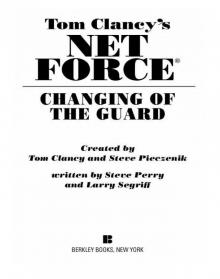 Changing of the Guard
Changing of the Guard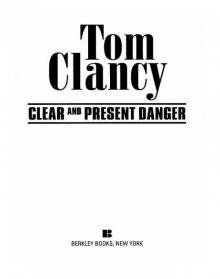 Clear and Present Danger
Clear and Present Danger Hounds of Rome
Hounds of Rome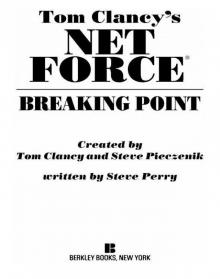 Breaking Point
Breaking Point Tom Clancy's Jack Ryan Books 7-12
Tom Clancy's Jack Ryan Books 7-12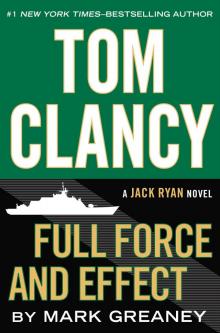 Full Force and Effect
Full Force and Effect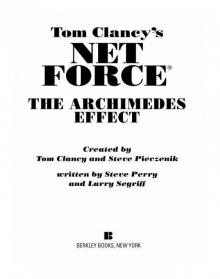 The Archimedes Effect
The Archimedes Effect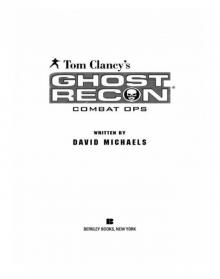 Combat Ops
Combat Ops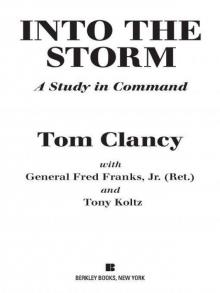 Into the Storm: On the Ground in Iraq
Into the Storm: On the Ground in Iraq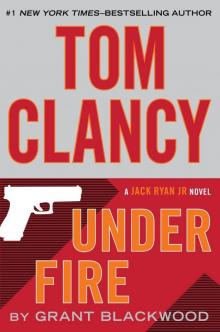 Under Fire
Under Fire Point of Impact
Point of Impact Red Rabbit
Red Rabbit Rainbow Six
Rainbow Six The Hunt for Red October
The Hunt for Red October The Teeth of the Tiger
The Teeth of the Tiger Conviction (2009)
Conviction (2009)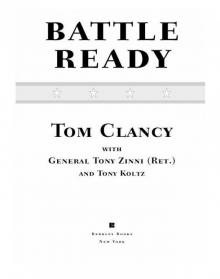 Battle Ready
Battle Ready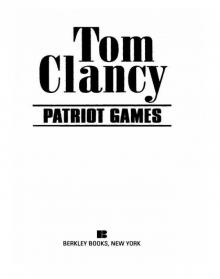 Patriot Games
Patriot Games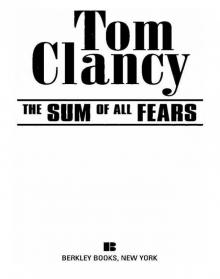 The Sum of All Fears
The Sum of All Fears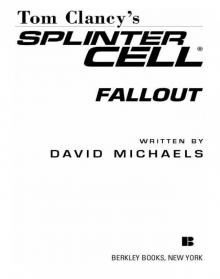 Fallout (2007)
Fallout (2007) Red Storm Rising
Red Storm Rising The Cardinal of the Kremlin
The Cardinal of the Kremlin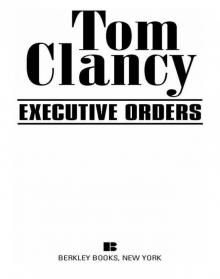 Executive Orders
Executive Orders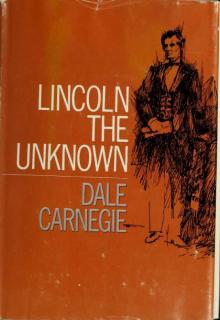 Lincoln, the unknown
Lincoln, the unknown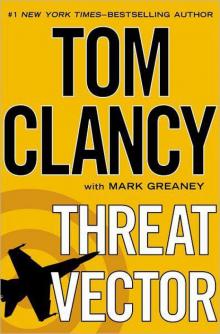 Threat Vector
Threat Vector The Hunted
The Hunted Shadow Warriors: Inside the Special Forces
Shadow Warriors: Inside the Special Forces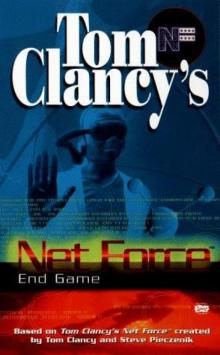 End Game
End Game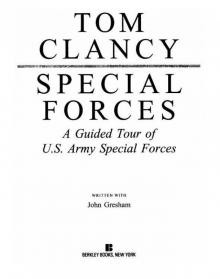 Special Forces: A Guided Tour of U.S. Army Special Forces
Special Forces: A Guided Tour of U.S. Army Special Forces Locked On
Locked On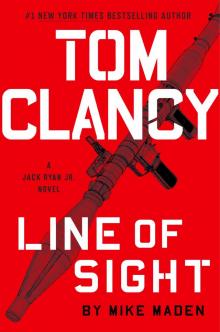 Line of Sight
Line of Sight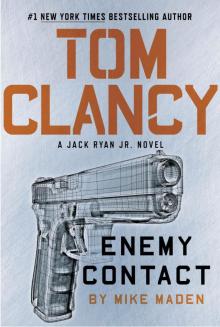 Tom Clancy Enemy Contact - Mike Maden
Tom Clancy Enemy Contact - Mike Maden Fighter Wing: A Guided Tour of an Air Force Combat Wing
Fighter Wing: A Guided Tour of an Air Force Combat Wing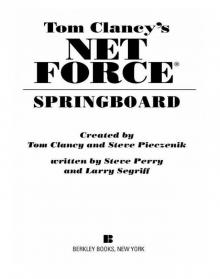 Springboard
Springboard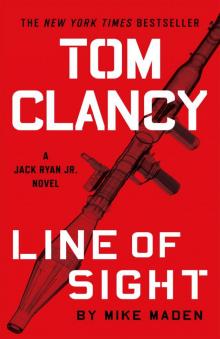 Line of Sight - Mike Maden
Line of Sight - Mike Maden EndWar
EndWar Dead or Alive
Dead or Alive Tom Clancy Support and Defend
Tom Clancy Support and Defend Checkmate
Checkmate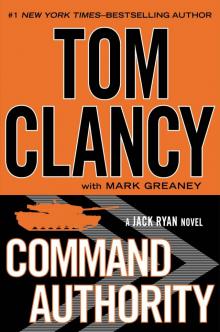 Command Authority
Command Authority Carrier: A Guided Tour of an Aircraft Carrier
Carrier: A Guided Tour of an Aircraft Carrier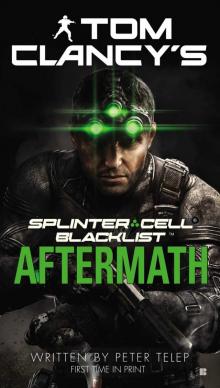 Blacklist Aftermath
Blacklist Aftermath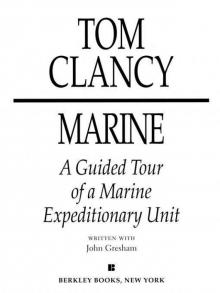 Marine: A Guided Tour of a Marine Expeditionary Unit
Marine: A Guided Tour of a Marine Expeditionary Unit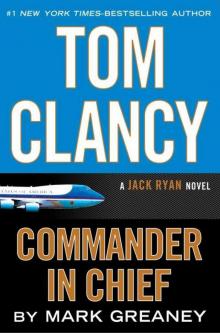 Commander-In-Chief
Commander-In-Chief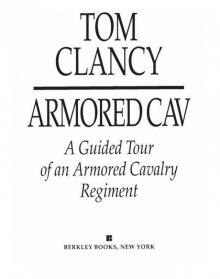 Armored Cav: A Guided Tour of an Armored Cavalry Regiment
Armored Cav: A Guided Tour of an Armored Cavalry Regiment Tom Clancy's Jack Ryan Books 1-6
Tom Clancy's Jack Ryan Books 1-6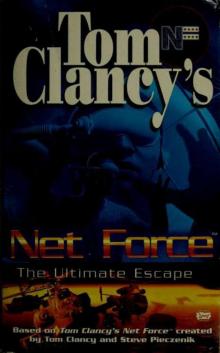 The Ultimate Escape
The Ultimate Escape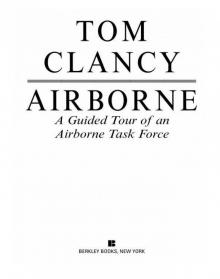 Airborne: A Guided Tour of an Airborne Task Force
Airborne: A Guided Tour of an Airborne Task Force Debt of Honor
Debt of Honor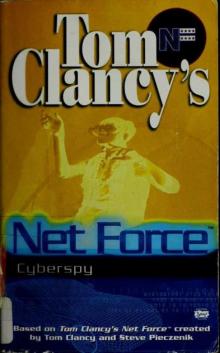 Cyberspy
Cyberspy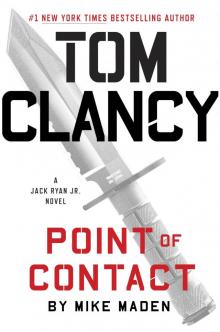 Point of Contact
Point of Contact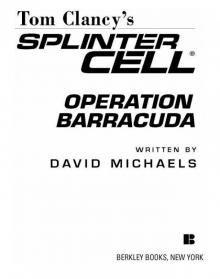 Operation Barracuda (2005)
Operation Barracuda (2005)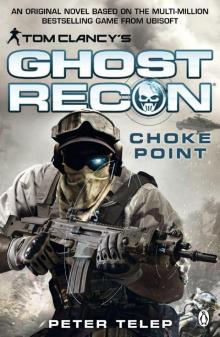 Choke Point
Choke Point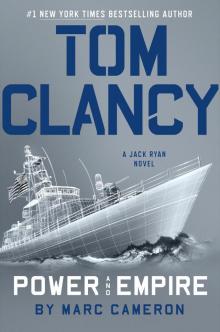 Power and Empire
Power and Empire Every Man a Tiger: The Gulf War Air Campaign
Every Man a Tiger: The Gulf War Air Campaign Endgame (1998)
Endgame (1998)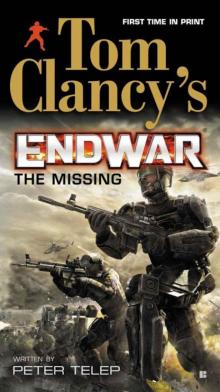 EndWar: The Missing
EndWar: The Missing Splinter Cell (2004)
Splinter Cell (2004) The Great Race
The Great Race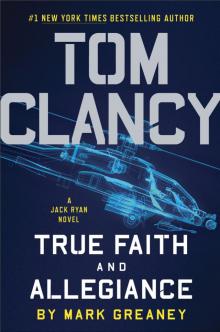 True Faith and Allegiance
True Faith and Allegiance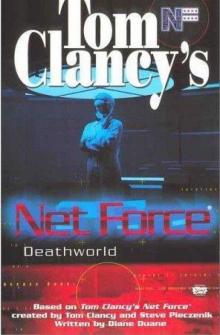 Deathworld
Deathworld Ghost Recon (2008)
Ghost Recon (2008)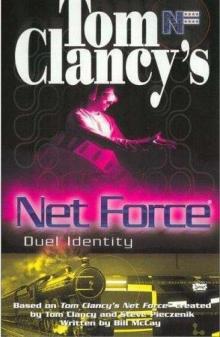 Duel Identity
Duel Identity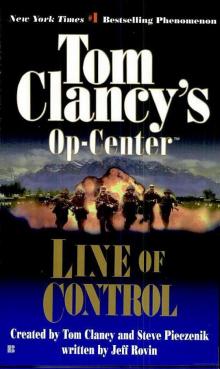 Line of Control o-8
Line of Control o-8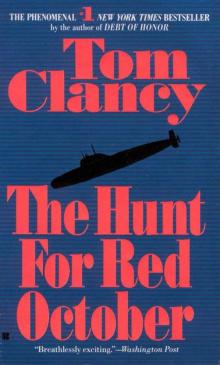 The Hunt for Red October jr-3
The Hunt for Red October jr-3 Hidden Agendas nf-2
Hidden Agendas nf-2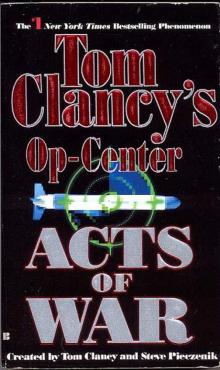 Acts of War oc-4
Acts of War oc-4 Ruthless.Com pp-2
Ruthless.Com pp-2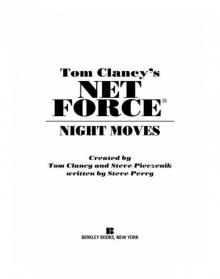 Night Moves
Night Moves The Hounds of Rome - Mystery of a Fugitive Priest
The Hounds of Rome - Mystery of a Fugitive Priest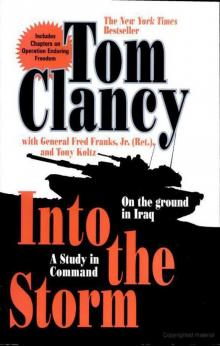 Into the Storm: On the Ground in Iraq sic-1
Into the Storm: On the Ground in Iraq sic-1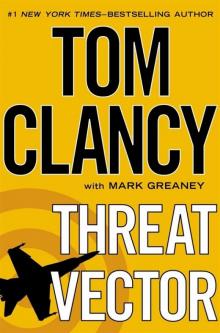 Threat Vector jrj-4
Threat Vector jrj-4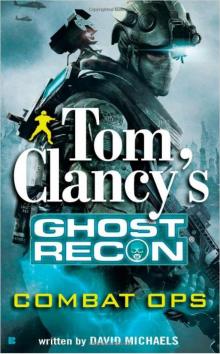 Combat Ops gr-2
Combat Ops gr-2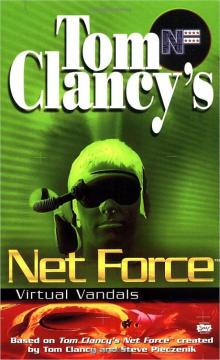 Virtual Vandals nfe-1
Virtual Vandals nfe-1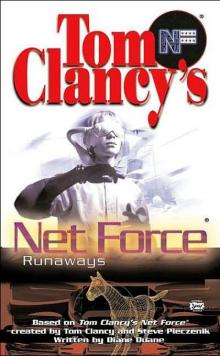 Runaways nfe-16
Runaways nfe-16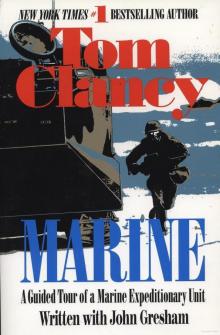 Marine: A Guided Tour of a Marine Expeditionary Unit tcml-4
Marine: A Guided Tour of a Marine Expeditionary Unit tcml-4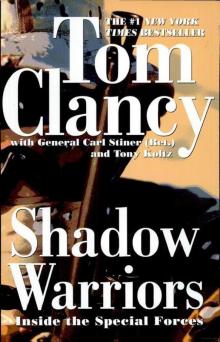 Shadow Warriors: Inside the Special Forces sic-3
Shadow Warriors: Inside the Special Forces sic-3 Jack Ryan Books 1-6
Jack Ryan Books 1-6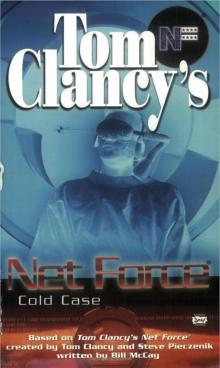 Cold Case nfe-15
Cold Case nfe-15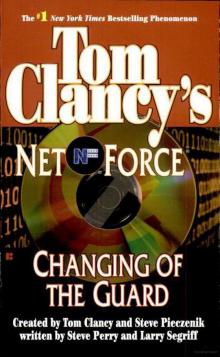 Changing of the Guard nf-8
Changing of the Guard nf-8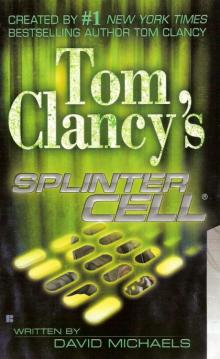 Splinter Cell sc-1
Splinter Cell sc-1 Battle Ready sic-4
Battle Ready sic-4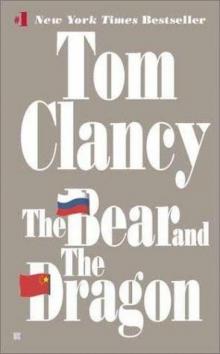 The Bear and the Dragon jrao-11
The Bear and the Dragon jrao-11 Fighter Wing: A Guided Tour of an Air Force Combat Wing tcml-3
Fighter Wing: A Guided Tour of an Air Force Combat Wing tcml-3 Patriot Games jr-1
Patriot Games jr-1 Jack Ryan Books 7-12
Jack Ryan Books 7-12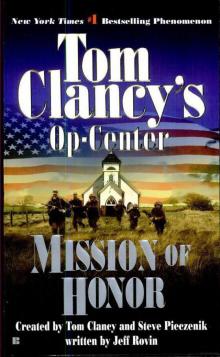 Mission of Honor o-9
Mission of Honor o-9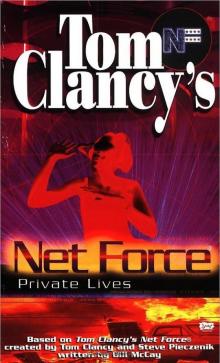 Private Lives nfe-9
Private Lives nfe-9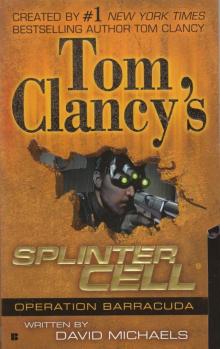 Operation Barracuda sc-2
Operation Barracuda sc-2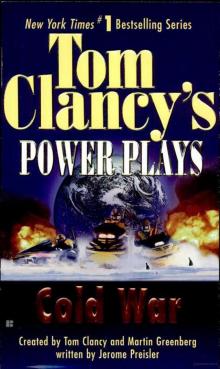 Cold War pp-5
Cold War pp-5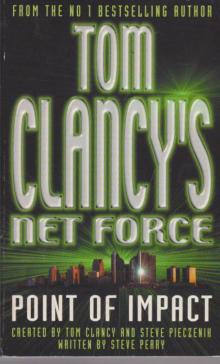 Point of Impact nf-5
Point of Impact nf-5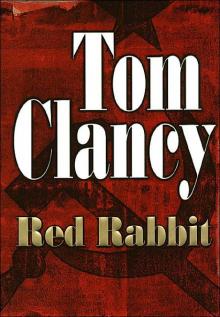 Red Rabbit jr-9
Red Rabbit jr-9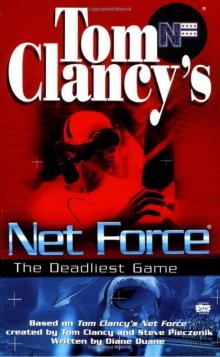 The Deadliest Game nfe-2
The Deadliest Game nfe-2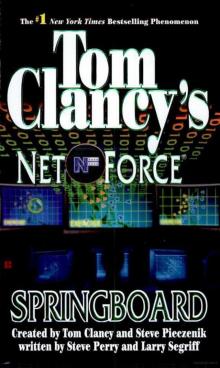 Springboard nf-9
Springboard nf-9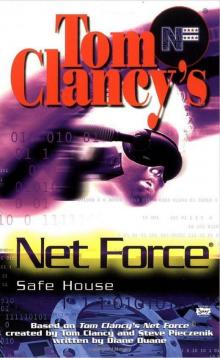 Safe House nfe-10
Safe House nfe-10 EndWar e-1
EndWar e-1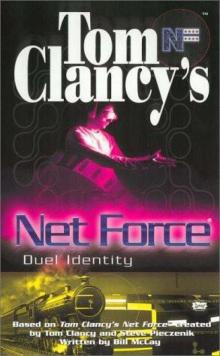 Duel Identity nfe-12
Duel Identity nfe-12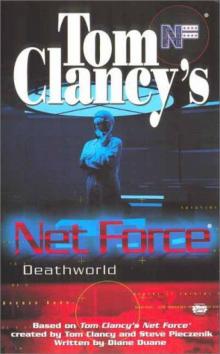 Deathworld nfe-13
Deathworld nfe-13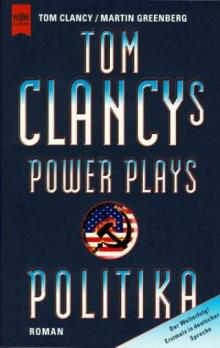 Politika pp-1
Politika pp-1 Rainbow Six jr-9
Rainbow Six jr-9 Tom Clancy's Power Plays 1 - 4
Tom Clancy's Power Plays 1 - 4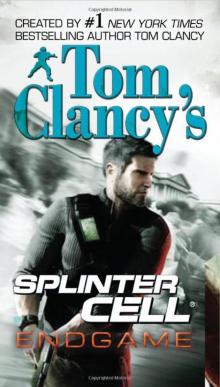 Endgame sc-6
Endgame sc-6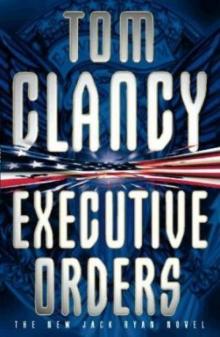 Executive Orders jr-7
Executive Orders jr-7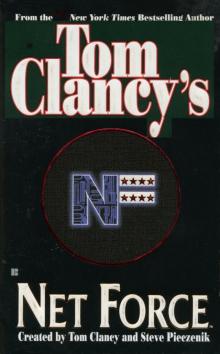 Net Force nf-1
Net Force nf-1 Call to Treason o-11
Call to Treason o-11 Locked On jrj-3
Locked On jrj-3 Against All Enemies
Against All Enemies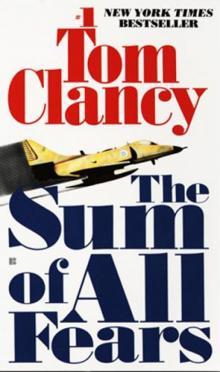 The Sum of All Fears jr-7
The Sum of All Fears jr-7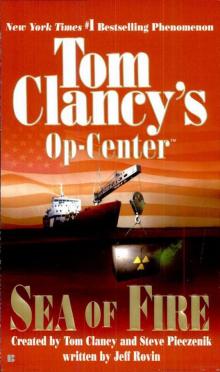 Sea of Fire o-10
Sea of Fire o-10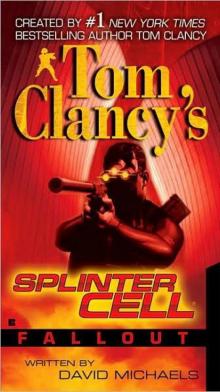 Fallout sc-4
Fallout sc-4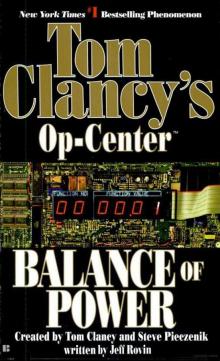 Balance of Power o-5
Balance of Power o-5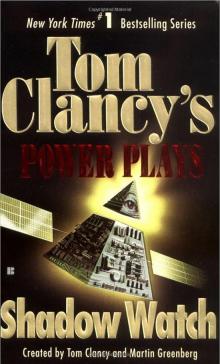 Shadow Watch pp-3
Shadow Watch pp-3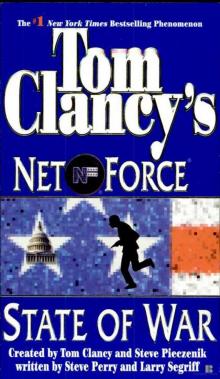 State of War nf-7
State of War nf-7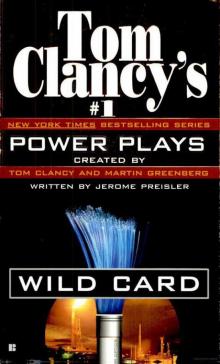 Wild Card pp-8
Wild Card pp-8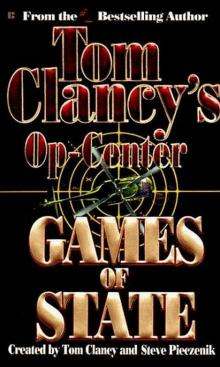 Games of State o-3
Games of State o-3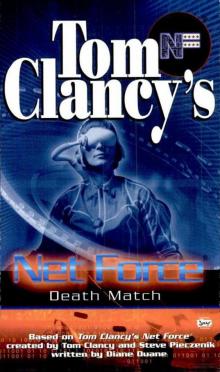 Death Match nfe-18
Death Match nfe-18 Against All Enemies mm-1
Against All Enemies mm-1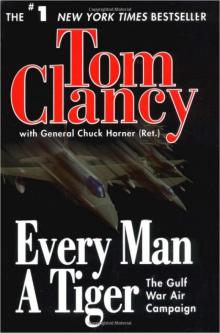 Every Man a Tiger: The Gulf War Air Campaign sic-2
Every Man a Tiger: The Gulf War Air Campaign sic-2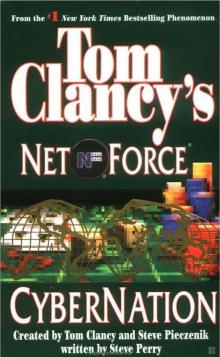 Cybernation nf-6
Cybernation nf-6 Support and Defend
Support and Defend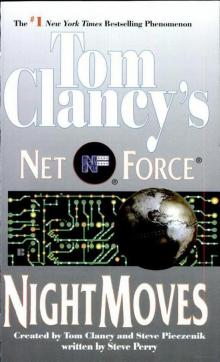 Night Moves nf-3
Night Moves nf-3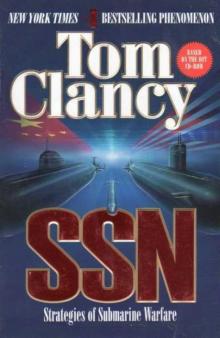 SSN
SSN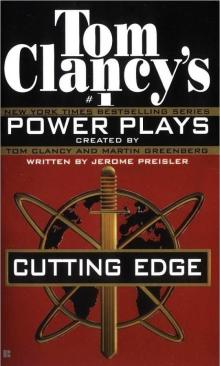 Cutting Edge pp-6
Cutting Edge pp-6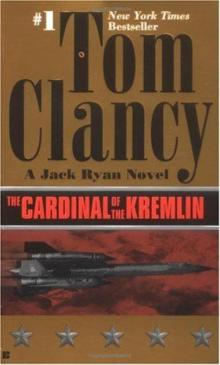 The Cardinal of the Kremlin jrao-5
The Cardinal of the Kremlin jrao-5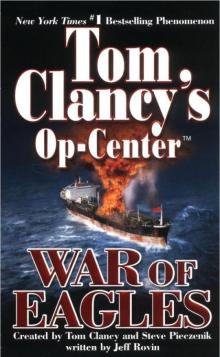 War of Eagles o-12
War of Eagles o-12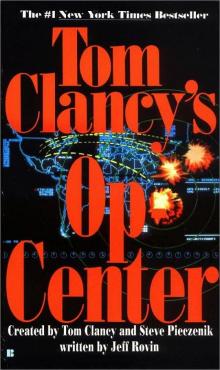 Op-Center o-1
Op-Center o-1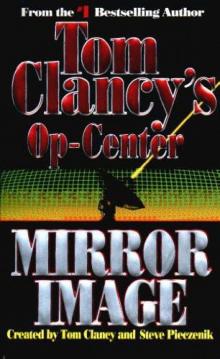 Mirror Image o-2
Mirror Image o-2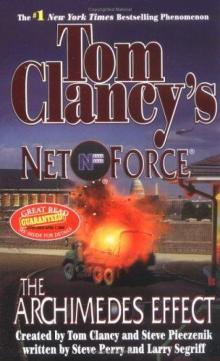 The Archimedes Effect nf-10
The Archimedes Effect nf-10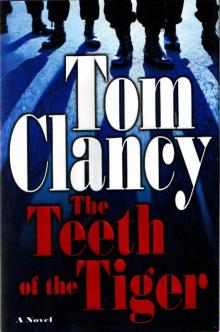 Teeth of the Tiger jrj-1
Teeth of the Tiger jrj-1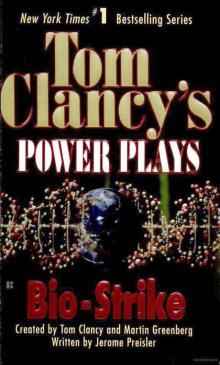 Bio-Strike pp-4
Bio-Strike pp-4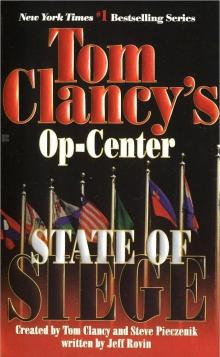 State of Siege o-6
State of Siege o-6 Debt of Honor jr-6
Debt of Honor jr-6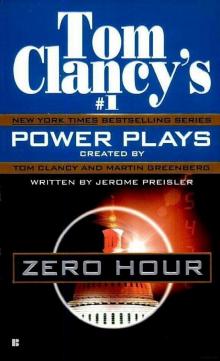 Zero Hour pp-7
Zero Hour pp-7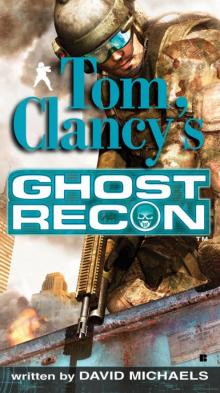 Ghost Recon gr-1
Ghost Recon gr-1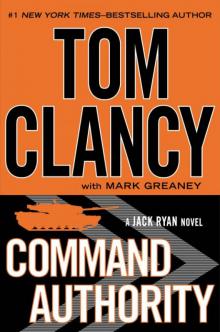 Command Authority jr-10
Command Authority jr-10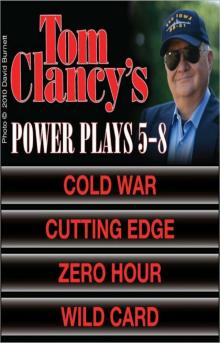 Tom Clancy's Power Plays 5 - 8
Tom Clancy's Power Plays 5 - 8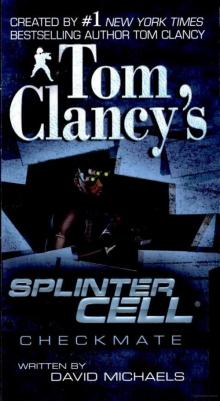 Checkmate sc-3
Checkmate sc-3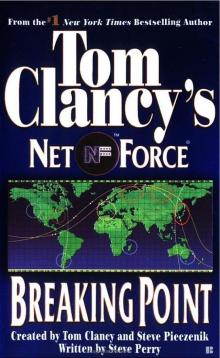 Breaking Point nf-4
Breaking Point nf-4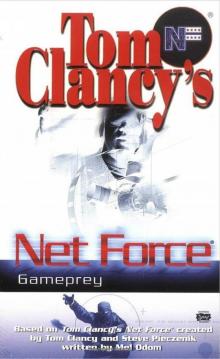 Gameprey nfe-11
Gameprey nfe-11 The Hunted e-2
The Hunted e-2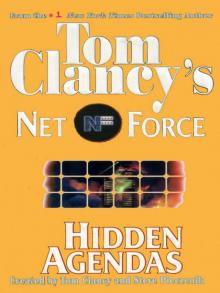 Hidden Agendas
Hidden Agendas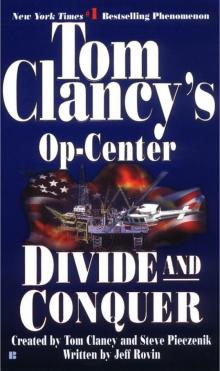 Divide and Conquer o-7
Divide and Conquer o-7